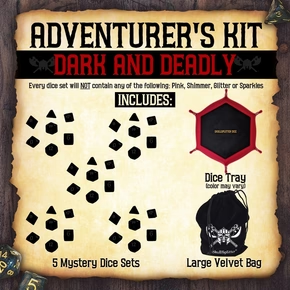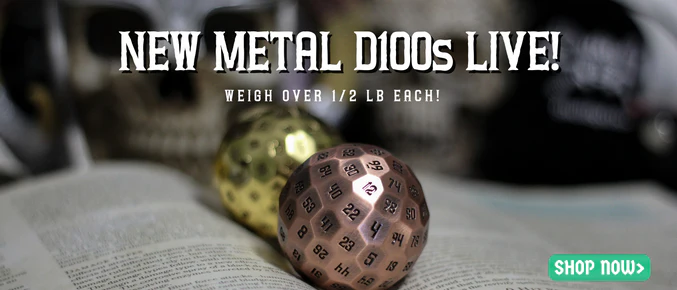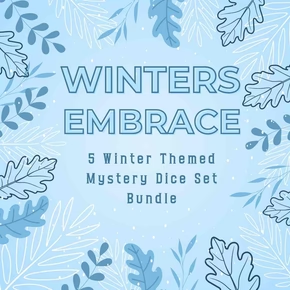
DND 5e Character Sheet for Beginners
Do you want to know how to make a DND character sheet?
Table of Contents:
You can download the official 5E Character Sheet and then print it out. But if you don’t have a printer, this might require driving to a store with a print shop.
In this article, we’ll explore another option: making your own basic D&D character sheet using notebook paper and pen, a smartphone note app, or a word processor.
If you don’t want to spend precious time printing out character sheets, you’ve come to the right place. We’re going to explain every piece of information you’ll need on your Dungeons and Dragons character sheet. We’re going to explain how to make a DnD 5E character sheet.
Basic info
On your Dungeons and Dragons character sheet, you’ll need a place to put basic information about your character. This includes the character’s name, race, class, level, alignment, and number of experience points. This is some of the most important info you’ll need to know about your character. And for that reason, it should go at the very top of the first page.
If you are just beginning to create your character, you may not know what name to choose yet. That’s OK. Just put a field on the page that can be filled out with the PC’s name once you choose it.
Ability scores

The second most important piece of info is your character’s ability scores. Your Str, Dex, Con, Cha, Int, and Wis will be used over and over again in the game. You’ll need these scores to be easy to find while you are playing. Put these scores below your character’s basic information.
Beside each score, put that ability’s modifier in parenthesis. For example, if you have a score of 15, your modifier is +2. So put 15 (+2) on the character sheet. This will make it easy to know what bonuses to use for actions that use that particular ability.
If you haven’t determined what your ability scores are yet, roll 4d6 and throw away the lowest roll. Record this number. Then repeat the process five more times, until you end up with six scores. Place each score into one of your abilities - until there are no scores left that have not been used and every ability has a score.
After you’ve figured out your starting ability scores, look up the section for your race in the Player’s Handbook or Basic Rules. Most races get a bonus to certain ability scores. Make sure you add these in.
To get your modifier for each ability, look it up in “Chapter 1.3: Determine Ability Scores.”
Proficiency bonus and saving throw bonuses
Look up your proficiency bonus using the table in the description for your character class. Put this bonus off to the side of your ability scores or below them.
In most cases, your saving throw bonuses will be the same as your ability modifiers. But some races and classes have special bonuses for particular types of saving throws. If your character has any of these, this information should be listed near your ability scores so that it is easy to remember.
Perception skill
In Dungeons and Dragons, Perception is one of the most used skills. If your character has proficiency in Perception, add your proficiency bonus to your Wisdom modifier. This is your bonus to Perception skill checks.
If you do not have proficiency in Perception, just list your Wisdom modifier as your bonus to Perception checks.
This information should be beside or below your ability scores, proficiency bonus, and saving throw bonuses (if any).
Skills

Further down the page or on a separate page, list all of the skills in the game and the abilities they depend on. If you don’t remember what they are, here is a refresher:
- Acrobatics (Dex)
- Animal Handling (Wis)
- Arcana (Int)
- Athletics (Str)
- Deception (Cha)
- History (Int)
- Insight (Wis)
- Intimidation (Cha)
- Investigation (Int)
- Medicine (Wis)
- Nature (Int)
- Perception (Wis)
- Performance (Cha)
- Persuasion (Cha)
- Religion (Int)
- Sleight of Hand (Dex)
- Stealth (Dex)
- Survival (Wis)
Beside each skill, list the bonus for that skill. This will be either the ability modifier for it if you are not proficient or your proficiency bonus + the ability modifier if you are proficient.
Listing this information in this separate “skill” section will allow you to quickly look it up without having to recalculate it each time.
Armor class, initiative, and speed
Below your skills or on a third piece of paper, write down your character’s AC, initiative bonus, and speed.
Your AC is determined by the type of armor you are wearing. Depending on the type of armor, you may also be able to add your Dexterity modifier to your AC. Your initiative bonus is your Dex modifier plus whatever extra initiative bonus you may have gained through racial abilities, spells, feats, etc.
Your speed is listed under your race’s description. Keep track of it in this section for when you need to know how far you can run in battle or other stressful situations.
Hit points, attacks, and offensive spells
Look up your race’s description and find the number of hit points your character will start with. List this as “maximum hit points.” Add a second field labeled “current hit points.” In a battle, both of these pieces of info will be very important.
In a separate section, list all of the major attacks your character is capable of. These may be weapon attacks, special abilities that do damage, spells, or some combination of the three. For each attack, list the attack-roll bonus, damage dice, and damage type.
Spells and spell-related scores

If your character is a spellcaster, list spells and spell-related scores on a separate sheet of paper. At the top of this sheet, write down your character’s spellcasting ability, attack bonus, and save DC.
Your spellcasting ability depends on your character’s class. For example, if your character is a Bard, Charisma is his spellcasting ability. But if he is a Wizard, Intelligence is.
Your character’s spellcasting attack bonus is his proficiency bonus plus his spellcasting ability modifier. For example, if a Bard’s proficiency bonus is +2 and his Charisma modifier is +2, his spellcasting attack bonus is +4. And if a Wizard’s proficiency modifier is +3 and his Int modifier is +2, his spellcasting attack bonus is +5.
Your character’s spell save DC is his spellcasting attack bonus + 8. Listing this score in this section will prevent you from having to recalculate it every time an opponent has to make a saving throw against a spell you’ve cast, saving you time over the long-run.
Below these scores, create a separate section for each level of spell: cantrips, 1st level spells, 2nd level spells, etc. Under each section, list the spells you have memorized. During play, you’ll be able to strike through a spell to indicate that a particular spell slot has been used up. This will allow you to easily keep track of which spells are still available to you.
Other information
On the last sheet of paper, record whatever other information about your character you need to keep track of. This is where you put information that isn’t used very often, but that you still need to know in those rare circumstances where it becomes important.
Here is a list of some pieces of info to put on this page:
- Equipment
- Money (platinum, gold, silver)
- Background
- Personality traits
- Ideals
- Bonds
- Flaws
- Features and traits
- Languages known
- Age
- Height
- Weight
- Eye-color
- Skin-tone
- Hair color
- Hair type (long, straight, short, curly, etc.)
- General appearance
- Allies and organizations
- Treasures owned
- Backstory
What to use to make a DND character sheet
In the previous sections, we’ve assumed that you will be using a pencil and paper to make your character sheet. But you could just as easily record this information on a word processor (assuming your PC is nearby) or a smartphone or tablet app. Practically anything can be used to record a DND character sheet.
Of course, the official character sheets are nice to have. They have cool-looking DND art on them, and they are a little better organized than what you can accomplish on your own.
But if you are in a hurry and don’t have time to drive to the print shop, this is how you can make your own DND character sheet.
Enjoy this Guide? You May Also Like:
Thinking about other classes? Check out our giant list of D&D 5e Tools & Resources here.
D&D for Beginners | Dungeons and Dragons Guide
Hungry for Adventure? Your group will love these D&D Game Night Snack Recipes
New to find a D&D Group? Check out our guide on How to Find a D&D Group.
Disclaimer
Last updated: January 27, 2019
The information contained on www.SkullSplitterDice.com website (the "Service") is for general information purposes only.
Blueshift Nine, LLC assumes no responsibility for errors or omissions in the contents on the Service.
In no event shall Blueshift Nine, LLC be liable for any special, direct, indirect, consequential, or incidental damages or any damages whatsoever, whether in an action of contract, negligence or other tort, arising out of or in connection with the use of the Service or the contents of the Service. Blueshift Nine, LLC reserves the right to make additions, deletions, or modification to the contents on the Service at any time without prior notice.
Blueshift Nine, LLC does not warrant that the Service is free of viruses or other harmful components.
Affiliate disclaimer
This affiliate disclosure details the affiliate relationships of Blueshift Nine, LLC with other companies and products.
Some of the links are "affiliate links", a link with a special tracking code. This means if you click on an affiliate link and purchase the item, we will receive an affiliate commission.
The price of the item is the same whether it is an affiliate link or not. Regardless, we only recommend products or services we believe will add value to our readers.
By using the affiliate links, you are helping support the Service, and we genuinely appreciate your support.
Affiliate advertising programs that the Service uses are:
- Amazon Services LLC Associates Program
- As an Amazon Associate, I earn from qualifying purchases.
- Blueshift Nine, LLC is a participant in the Amazon Services LLC Associates Program, an affiliate advertising program designed to provide a means for sites to earn advertising fees by advertising and linking to Amazon.com or endless.com, MYHABIT.com, SmallParts.com, or AmazonWireless.com.
- Pages on this Service may include affiliate links to Amazon and its affiliate sites on which the owner of this Service, Blueshift Nine, LLC, will make a referral commission.

Disclaimer
Last updated: January 27, 2019
The information contained on www.SkullSplitterDice.com website (the "Service") is for general information purposes only.
www.SkullSplitterDice.com is a participant in the Amazon Services LLC Associates Program, an affiliate advertising program designed to provide a means for sites to earn advertising fees by advertising and linking to Amazon.com. (source: Section 5)
Blueshift Nine, LLC assumes no responsibility for errors or omissions in the contents on the Service.
In no event shall Blueshift Nine, LLC be liable for any special, direct, indirect, consequential, or incidental damages or any damages whatsoever, whether in an action of contract, negligence or other tort, arising out of or in connection with the use of the Service or the contents of the Service. Blueshift Nine, LLC reserves the right to make additions, deletions, or modification to the contents on the Service at any time without prior notice.
Blueshift Nine, LLC does not warrant that the Service is free of viruses or other harmful components.
Affiliate disclaimer
This affiliate disclosure details the affiliate relationships of Blueshift Nine, LLC with other companies and products.
Some of the links are "affiliate links", a link with a special tracking code. This means if you click on an affiliate link and purchase the item, we will receive an affiliate commission.
The price of the item is the same whether it is an affiliate link or not. Regardless, we only recommend products or services we believe will add value to our readers.
By using the affiliate links, you are helping support the Service, and we genuinely appreciate your support.
Affiliate advertising programs that the Service uses are:
- Amazon Services LLC Associates Program
- As an Amazon Associate, I earn from qualifying purchases.
- Blueshift Nine, LLC is a participant in the Amazon Services LLC Associates Program, an affiliate advertising program designed to provide a means for sites to earn advertising fees by advertising and linking to Amazon.com or endless.com, MYHABIT.com, SmallParts.com, or AmazonWireless.com.
- Pages on this Service may include affiliate links to Amazon and its affiliate sites on which the owner of this Service, Blueshift Nine, LLC, will make a referral commission.
